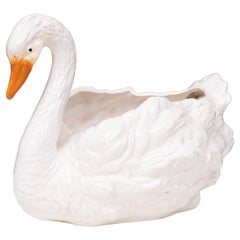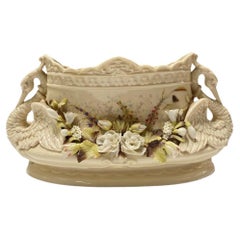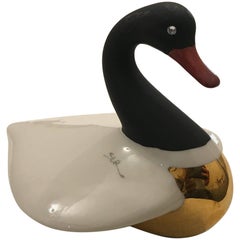Capodimonte Swan
Antique 1880s Italian Victorian Planters and Jardinieres
Ceramic
Antique Early 1900s Art Nouveau Vases
Porcelain
Recent Sales
Early 20th Century Italian Mid-Century Modern Porcelain
Porcelain
People Also Browsed
Antique 18th Century French Baroque Figurative Sculptures
Oak
Early 20th Century German Empire Busts
Porcelain
Mid-20th Century French Mid-Century Modern Bird Cages
Brass
21st Century and Contemporary British Chinoiserie Wallpaper
Paper
21st Century and Contemporary American Art Nouveau Doors and Gates
2010s Italian Other Chandeliers and Pendants
Blown Glass
Vintage 1920s Danish Scandinavian Modern Bookcases
Pine
Early 2000s Hungarian Chinese Export Animal Sculptures
Gold
Antique 1870s Japanese Meiji Cabinets
Iron
Antique Early 1900s French Art Nouveau Vases
Ceramic, Faience, Majolica
Antique 18th Century Japanese Paintings and Screens
Gold Leaf
Vintage 1910s Art Nouveau Porcelain
Porcelain
Vintage 1920s American Art Deco Glass
Art Glass
Mid-20th Century Italian Mid-Century Modern Vases
Glass, Murano Glass, Art Glass
Antique Late 19th Century Japanese Meiji Vases
Enamel
Antique Late 19th Century Japanese Vases
Enamel
Capodimonte for sale on 1stDibs
If success is measured by lasting name recognition, Capodimonte porcelain would seem to be in the same league as such makers as Meissen, Sèvres and Wedgwood. Early examples of Capodimonte lamps — as well as the Italian manufacturer’s celebrated porcelain vases, figurines and sculptures — can be hard to come by, but the best later pieces possess the same over-the-top charm.
The Real Fabbrica (“royal factory”) di Capodimonte hasn’t actually produced porcelain since the early 19th century, when Charles’s son Ferdinand sold it. Although secondary manufacturers have built upon the aesthetic and kept the name alive, some connoisseurs of the royal product feel these pieces should be labeled “in the style of” Capodimonte.
The timeline of royal Capodimonte porcelain is decidedly brief. From beginning to end, its manufacture lasted approximately 75 years. King Charles VII of Naples, who founded the manufactory in 1743, began experimenting with porcelain around 1738, the year he married Maria Amalia of Saxony. No coincidence there. His new bride was the granddaughter of Augustus the Strong, Elector of Saxony and founder of Meissen, the first European hard-paste porcelain manufactory. Her dowry included 17 Meissen table services.
Struck by porcelain fever, Charles built a dedicated facility on top of a hill (capo di monte) overlooking Naples. He financed expeditions to search for the right clay. He hired chemists and artisans to experiment. His earliest successes were small white snuffboxes and vases, although efforts soon progressed to full sets of tableware, decorative objects and stylized figurines of peasants and theatrical personalities.
In 1759, Charles succeeded to the throne of Spain. He moved the manufactory with him — including 40 workers and 4 tons of clay — and continued operations in Madrid. Twelve years later, his son Ferdinand IV, who inherited the throne of Naples, built a new factory there that became known for distinctly rococo designs.
The Napoleonic wars interrupted production, and around 1807, oversight of the royal factories was transferred to a franchisee named Giovanni Poulard-Prad.
Beginning in the mid-18th century, porcelain made by Charles’s factory was stamped with a fleur-de-lis, usually in underglaze blue. Pieces from Ferdinand’s were stamped with a Neapolitan N topped by a crown. When secondary manufacturers began production, they retained this mark, in multiple variations. The value of these later 19th- and 20th-century pieces is determined by the quality, not the Capodimonte porcelain marks.
Find antique and vintage Capodimonte porcelain for sale on 1stDibs.
- What is Capodimonte's style?1 Answer1stDibs ExpertFebruary 27, 2024Capodimonte's style is regal and opulent, though it has varied over the years. Early pieces from the celebrated Italian porcelain manufacturer often reflect Rococo design sensibilities, with organic motifs rendered in soft colors. As trends changed, so did the look of Capodimonte porcelain, which skewed Victorian, Edwardian and Art Deco over the years that followed. Capodiomonte has also looked beyond its native Italy for inspiration, producing porcelain ware that reflects Japanese and ancient Roman decorative techniques. Shop a wide range of Capdodimonte porcelain on 1stDibs.


